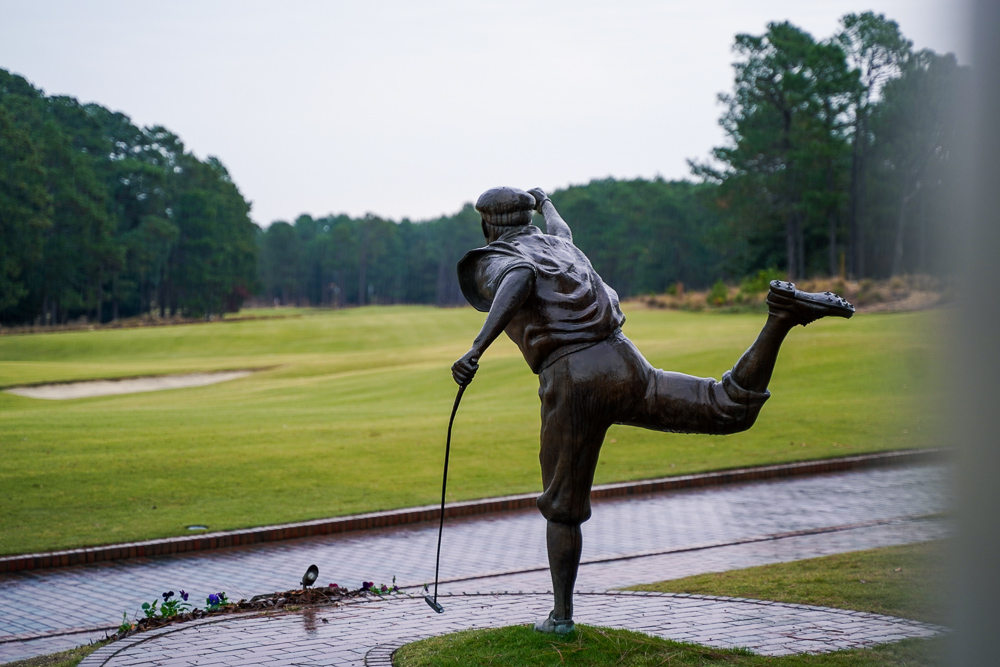How do you discover what you should ACTUALLY work on in your golf game? Legendary instructor Chuck Cook talks about his work with players like Payne Stewart, Luke Donald, Keegan Bradley and more in this podcast.
When Payne Stewart began working with Top-100 Instructor, Chuck Cook in 1989, he had only won once on the PGA Tour. Upon their first meeting, Payne asked Chuck to watch him hit some shots on the range. After five minutes, Payne wanted to go play.
It became evident from the start that Payne had trouble paying attention for extended periods of time. In fact, he had ADD. Chuck was quick to diagnose that structure was the one thing holding Payne back more than anything
Since it was obvious that Payne had an enormous amount of talent, there wasn’t much mechanical work to be done to his golf swing. He executed difficult shots extremely well because they commanded his attention. On the other hand, Payne struggled with easy shots. In order to improve, they had to find a reason for Payne to practice those easy shots.
One of the games they often played was a simple pitch-and-run chipping drill. Chuck would lay a towel on the green. Payne had to hit seven out of nine shots that landed on the towel and stopped within a club length of the hole before he go to lunch or out on the course.
The same was true with putting. Payne didn’t spend much time practicing short putts. So, Chuck devised a drill that Payne had to make 12 putts in a row from three, four and five feet before he could move on.
The same structure Chuck incorporated into Payne’s practice was reflected in his tournament preparation and course management as well.

Payne missed the cut in Memphis the week before the 1999 U.S. Open at Pinehurst. Having played Pinehurst no. 2 numerous times, Chuck knew a player had get the ball up and down in order to play well.
He and Payne spent their first two days walking the course with nothing but wedges and a putter.
Chuck took Payne’s yardage book and began marking with a blue pen, all the areas where it was impossible to get the ball up and down. The strategy was simple.
Unless Payne was hitting a wedge, he would aim for the spots that weren’t blue.
That simple exercise gave Payne the structure he needed to only hit one shot in a blue zone the entire week. He went on to win the U.S. Open over the likes of Tiger, Phil Mickelson and Vijay Singh.
Much of the way Chuck helped Payne become a more complete player is reflective of his greater teaching philosophy. It begins with how a particular player is wired.
Someone like Payne, needed structure and regimen to keep him focused on the task at hand. Conversely, someone like Tom Kite, another Cook student, was very analytical. Kite was so regimented in his practice and preparation that it often kept him playing freely and getting the most out of his game. Chuck, and sports psychologist, Dr. Bob Rotella, gave Kite that freedom.
By identifying the needs of each student, Chuck is able to devise a plan to help them realize their potential.
Even though his knowledge of the golf swing second to none, he takes a holistic approach with his students. He embraces the technology and biomechanics prevalent in today’s teaching methods but, doesn’t get bogged down by trying to fit one method to every player.
The only time he advocates making major changes in a player’s mechanics is if what they’re currently doing isn’t going to allow them to achieve their goals.

By balancing your daily recovery, strain and sleep, you will train optimally and unlock the secrets to your body’s true potential.
Recovery – Get personalized daily insight into how ready your body is ready to perform by looking at bio-metrics such as heart rate variability, resting heart rate, and sleep performance.
Strain – For those looking to track more than just steps. Track how strenuous your day is from start to finish and get insight into how much you exert yourself during training.
Sleep – Optimize the way you sleep by getting target sleep times based on how strenuous your day is and your performance goals. Monitor your sleep stages and cycles, time in bed vs actual sleep, sleep efficiency (How much you were asleep while sleeping), and more.
Get email updates to full interviews; exclusive insights; our regular newsletter, the DISPATCH; and our latest education offers.
© 2023 All Rights Reserved. This site is protected by reCAPTCHA and the Google Privacy Policy and Terms of Service apply.